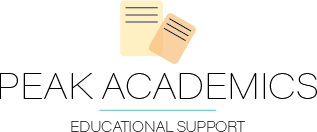Studying is a huge skill necessary to learn, especially as students enter middle and high school. Often times, students think the act of “studying” is one that should occur a night or two before the big test. They spend hours re-reading all of their notes and materials, only to feel stressed and under-prepared (and tired from staying up late) on the day of the test. Studying is actually a process that should be taking place throughout the entire semester. Understanding some key study skills can greatly improve the process of studying and cut out those dreaded late night cram sessions. Below are five tips to organize materials and notes for a more efficient and effective study time.
1. Take Active Notes in Class: One of the best ways to cut down on study time right before a test is to actively take notes in class in an organized manner. The Cornell Method of note-taking is a great option to help with organized note-taking. There are printable templates for the Cornell Note Taking method on Etsy, or you can make it yourself. Split the page into three sections: one for notes from class, one for the main idea and a small section at the bottom for summarizing. Taking the extra time to make organized notes in class will significantly reduce the amount of time needed to actively study closer to the test.
2. Create Study Materials: After each unit in class, take some time to create study materials from the organized notes you have been taking. This might look like a new set of flashcards, or a simple study guide pertaining to each unit of information. Having these materials already made by the time the test comes up will be key in cutting down on study time, and will provide active review in the process.
3. Create a study schedule: Pulling an all-nighter the evening before a big test is certainly not the most effective way to study. Our brains retain information better when we take it in in shorter chunks over longer periods of time. Once your child has an organized note-taking system, they can then create a study schedule where they set aside 20-30 minutes 2-3 times a week for each class to actively review notes. This happens every single week, not just before the big test, so that by the time the test comes up they will have a deeper understanding of the knowledge required of them for the test.
4. Organize Materials by Topic: If you have been given a study guide, this is a wonderful opportunity to organize your notes and materials by topics and sub-topics provided on the study guide. Take a look through the study guide and write down a list of all the main topics that will be required to know on the test. Then go through all of your notes and materials from class and organize them by topics covered on the study guide.
5. Participate in active studying techniques: Re-reading notes can be helpful throughout the semester, however more active study techniques need to be utilized to study effectively and efficiently. Quizlet is an online platform that allows you to create quizzes or flashcards for your classes. By formulating questions yourself, and then answering them you are much more actively participating in the study process and will better learn the information. Alternately, have a friend or family quiz you over the required material.
Written by: Laine J.
















